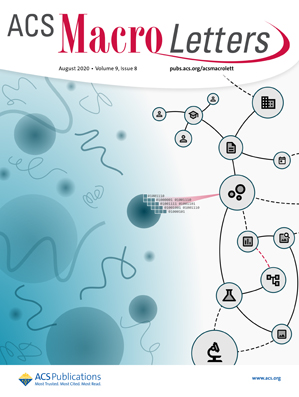分子电荷不对称控制凝结物大小的理论。
IF 5.2
Q1 POLYMER SCIENCE
引用次数: 0
摘要
生物分子凝聚物是由多种分子组成的复杂液滴,通过多种机制相互作用。凝结通常是由短程吸引驱动的,但净电荷也可以介导远距离排斥。利用分子动力学模拟和平衡场理论,我们证明了这种相反的相互作用可以抑制粗化,因此许多大小相等的液滴在平衡状态下共存。这种尺寸控制很大程度上取决于分子组分之间的电荷不对称,而短程吸引力的强度影响较小。该机制依赖于液滴排出离子;因此,它们不能有效地屏蔽静电,这意味着液滴获得净电荷,不能无限生长。我们的模拟表明,这种效应在细胞内的生物分子凝聚物中可能不太普遍,尽管我们仍然在这种情况下观察到稳定的小簇。综上所述,我们的工作揭示了通过分子电荷不对称产生的静电效应可以控制液滴的大小,这有助于我们对生物分子凝聚物的理解和化学工程中合成模式的创建。本文章由计算机程序翻译,如有差异,请以英文原文为准。
Theory of Condensate Size Control by Molecular Charge Asymmetry.
Biomolecular condensates are complex droplets comprising diverse molecules that interact by various mechanisms. Condensation is often driven by short-range attraction, but net charges can also mediate long-range repulsion. Using molecular dynamics simulations and an equilibrium field theory, we show that such opposing interactions can suppress coarsening, so many droplets of equal size coexist at equilibrium. This size control depends strongly on the charge asymmetry between molecular constituents, while the strength of the short-range attractions has a weak influence. The mechanism relies on droplets expelling ions; therefore, they cannot screen electrostatics effectively, implying that droplets acquire a net charge and cannot grow indefinitely. Our simulations indicate that this effect is likely less prevalent in biomolecular condensates within cells, although we still observe stable small clusters in this case. Taken together, our work reveals that electrostatic effects through molecular charge asymmetries can control droplet size, which contributes to our understanding of biomolecular condensates and the creation of synthetic patterns in chemical engineering.
求助全文
通过发布文献求助,成功后即可免费获取论文全文。
去求助
来源期刊
CiteScore
10.40
自引率
3.40%
发文量
209
审稿时长
1 months
期刊介绍:
ACS Macro Letters publishes research in all areas of contemporary soft matter science in which macromolecules play a key role, including nanotechnology, self-assembly, supramolecular chemistry, biomaterials, energy generation and storage, and renewable/sustainable materials. Submissions to ACS Macro Letters should justify clearly the rapid disclosure of the key elements of the study. The scope of the journal includes high-impact research of broad interest in all areas of polymer science and engineering, including cross-disciplinary research that interfaces with polymer science.
With the launch of ACS Macro Letters, all Communications that were formerly published in Macromolecules and Biomacromolecules will be published as Letters in ACS Macro Letters.

 求助内容:
求助内容: 应助结果提醒方式:
应助结果提醒方式:


